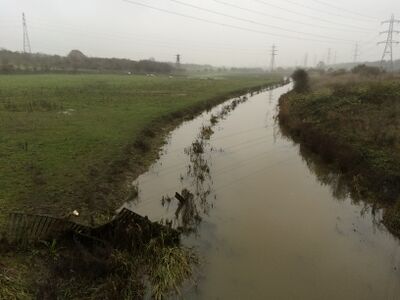Difference between revisions of "1D Open Channels"
Rohan.king (talk | contribs) |
Rohan.king (talk | contribs) m (→Basic Commands) |
||
| Line 13: | Line 13: | ||
<br> | <br> | ||
| − | <font color="blue"><tt>Read GIS Network</tt></font> <font color="red"><tt>==</tt></font><tt>..\model\mi\1d_nwke_xxxxx.MIF</tt | + | <font color="blue"><tt>Read GIS Network</tt></font> <font color="red"><tt>==</tt></font><tt>..\model\mi\1d_nwke_xxxxx.MIF</tt> ! network layer containing "S" channel alignments <br> |
| − | <font color="blue"><tt>Read GIS Table Links</tt></font> <font color="red"><tt>==</tt></font><tt>..\model\mi\1d_xs_xxxxx.MIF</tt | + | <font color="blue"><tt>Read GIS Table Links</tt></font> <font color="red"><tt>==</tt></font><tt>..\model\mi\1d_xs_xxxxx.MIF</tt> ! corresponding cross-section polylines <br> |
Revision as of 02:34, 9 February 2016
Page Under Construction
Introduction
Open waterways (channels) are most commonly modelled as "S" type channels, the S signifies a sloping channel that can handle steep, super-critical flows. Open channels can either be modeled as an inertial or non-inertial channel, the latter removes the Courant stability condition and is useful for stabilizing very short S channels with high velocities.
Example of an open channel that could be modelled in 1D

Basic Commands
Within the *.ecf the following commands and files are at a minimum required to a model an open channel:
Read GIS Network ==..\model\mi\1d_nwke_xxxxx.MIF ! network layer containing "S" channel alignments
Read GIS Table Links ==..\model\mi\1d_xs_xxxxx.MIF ! corresponding cross-section polylines
Any further questions please email TUFLOW support: support@tuflow.com